What’s Coming
About a year from now in Mazda retailers around the world, except maybe the US perhaps against Mazda’s better judgement if it still has any, will remarkably find another maker that debuts yet another new BEV as a brand’s first full production all electric product after years of waiting, with a tiny battery and a pitiful range. So pitiful, the 2021 Mazda MX-30 will actually make the 2013 Nissan LEAF and the 2008 Chevy Volt, the one with a “V,” competitive models once again, and not the Tesla Model Y. I’ll explain.
It seems that the legacy auto industry has become a master of disappointment. If they fail at anything it is their inability NOT to disappoint us. And in this new age of electromobilty, it seems the legacies don’t even have to try hard not to. I introduce the 2021 Mazda MX-30, a very short range BEV. Very short range, that is. We’re back to the compliance car segment that I thought we were done with. Maybe that’s the idea? We need to move way back in order to go forward! Like it or not!
Enough with the BEVs with the tiny batteries: Don’t be fooled by Christian Schultze, head of Mazda's European research and development center, for his cheesy explanation for another tiny battery all new BEV, Mazda’s first one. After all these years we’ve been waiting for Mazda to finally make a full electric car, this is the best they could offer? This one has only a 125 mile range, by European standards mind you, which by the way, the makers like to use that one instead of the EPA’s when they know the range is going to be crap. Schultze tells AutoBlog the car can easily do an average daily European range of 31 miles. God bless the Europeans! All this while Kona and Niro have EPA 258 and the two Bolts next year starting at 238, probably more. Is Mazda serious?
The Problem of Tiny Batteries
It is these kinds of vehicles with the tiny batteries and paltry ranges that harken the compliance era, not the 21st century 2020’s era, that don’t help with electromobility adoption. Instead of allaying first time adopter fears of range anxiety, this is just another commuter car that perpetually raises it instead, through the life of the battery, and worsen it when it becomes old and weak or too hot or cold outside. And as long as the consumer owns the car, the consumer will be perpetually frustrated by the car’s limitations, to constantly supercharge the battery to get to the destination ASAP or on time. This is how these tiny batteries don’t last as long because of the constant supercharging. In order for consumers to get turned on to electromobility, these cars need to look and behave like gas cars.
This is grown up time because hybrids were child’s play with training wheels and are becoming expensive to make, gas car phase out begins in six years, and there’s no Chevy Volt here for a motor to kick in and the owner to ignore it when MX-30 runs out of range. This is not the way to go about doing electromobilty 2020, unless this is about self inflicted industrial or market sabotage. Yeah, sometimes I wonder . . .
Whatever their reasons, you can tell Mazda didn’t listen to any of their focus groups and consumer market feedback as to what consumers want. This is the same kind of trouble legacy makers like Jaguar Land Rover got themselves into with electromobility in China, that now JLR is in serious financial trouble and soon might be toast. Tiny batteries make a cheap neat money saving economy variant for this car later, after the adoption phase, not before or during. Mazda is in serious trouble if they think they’re going to make money off this car. This SUV does not compete with Model Y, as even Y base variant is vastly superior to the MX-30, thus, a better buy.
What the Makers Risk
Not taking electromobility seriously now endangers the life of a legacy car company. Going through electromobility conversion, switchover, and adoption, and a car maker makes a serious wrong move in transit, can spell serious financial trouble, like JLR is in from selling only one electric car with a bunch of diesels or hybrids that all had crap quality none of which the Chinese wanted, or serious loss of market share in a new car market with a different car invention, something analysts are warning BMW might go through with a 146 mile Mini that its board of directors asked its Group CEO to resign as a result.
Once at the top of the cream with electromobility research and testing after being accused of taking their sweet ass time with i3 to make an electric Mini, to finally introducing a production car in the 2020’s with less than 150 miles of range while Tesla, Porsche, and Rivian are cranking theirs past 400, suddenly makes a brand like BMW look not only incompetent, but out of touch with reality. With the Group CEO’s resignation and their decision with the new CEO to make the car as is anyway, analysts are now saying that BMW might now be years behind trying to catch up with competitors in this new and tinier electric car market. And doing that in a tinier market may mean the road to bankruptcy. I’m sure a vehicle with even less range as this Mazda has, makes it fare worse for its brand.
What the Makers Need to Do
At this point, if any of the present makers intend to survive through this transition to make it through the rest of the century, they need to have a serious electric car on the road by now or imminently toward production to survive electromobilty. The markets have been reset with a completely different invention so all of them have to start again like it was 100 years ago competing at first with electric and steam cars before competing against each other. This time 100 years later, Tesla has the lead, and it’s safe to say, it won’t be making the same mistakes its electric ancestors made 100 years ago to extinction.
This is Economics 101, that even I know when starting out in a new fresh market you need to claim a stake ASAP to penetrate then saturate to make it more difficult for the competition.
This Mazda SUV is an electric car for 2010, not now. We don’t need this kind of car anymore, not here in the states, and with cheap battery tech, there’s no reason to be making them this way anymore either. Mazda doesn’t get it. They are wasting our time and precious amounts left of theirs, while imperiling themselves further toward bankruptcy with electromobility. I hope they realize this.
Schultze’s excuse?
He says the batteries are not recyclable and the smaller they are the less environmental impact they’ll have. Huh? WRONG. The smaller they are the shorter they’ll last the more money you’ll spend constantly supercharging them! Mazda really needs to stop suddenly worrying about how their products affect the environment, it’s way too late for them to do that out of no where, it makes people even more suspicious of their motives, and they have their facts wrong doing it that way. Does it make sense to keep buying replacement BEV batteries and spend more money constantly supercharging to get home on time? Or is that what they really want their customers to do so they can go back to their rotary engine they still love?
Here’s another: He says charging a battery like a Tesla requires extra electricity that’s not needed to full cap at 100%. Huh? MISLEADING. BEV owners already know unless they need to, charging up to 60% or 80% of full cap should suffice and makes better battery longevity v full charge. This is another of many reasons we need bigger batteries and longer ranges that Mazda can make a car like that, but they chose not to. This excuse is also patronizing to Mazda’s customers. That’s not his decision to make to cut battery size so people don’t over zealously charge, that’s for the customer to decide for his car and his money, not Shultze! And making the batteries smaller will force customers to supercharge them even more anyway, that’s the silly irony of that! Did this guy think this through?
One more: He says using up extra electricity creates more pollution. WRONG. Ah the backhanded version of the old electricity from coal argument. Extra electricity for what? To store it in a battery? That’s what the batteries are there for! And coal is not a primary source of grid electricity, and if it is a larger share in parts of the country, then a solar panel on your home charger solves this problem. I often hear this silly argument between this and the not recyclable issue and it befuddles me how people are so obsessed about and against electromobility technology to absolutely forget that petromobility is the most polluting damaging thing we’ve done to the Earth!
Coal People Worried About Recyclability?
While these people between Mazda and the myth supporters are wasting everyone’s time arguing that ion batteries pollute the earth and primary charging sources of energy to recharge a BEV comes from coal, BOTH WRONG, their gas cars, hybrids too, are emitting tons of carbon into the air way worse than a BEV or ion battery assembly ever could! Who’s polluting who more?
If anyone out there actually has the gall to worry that the Chinese will actually create massive Superfund sites of lithium and cobalt with depleted BEV batteries, or worried about how much coal exactly goes through a station charger, while their gas cars have ravaged the planet, then they need to adopt then when done with the battery, donate it depleted to make things like a BEV camper from repurposed batteries, install a solar panel on their home charger, and then tell Mazda to go make a real electric car, not another golf cart we don’t need.
This is the Reason for Tiny Batteries
And by the way, the real reason for the 125 mile range? Same reason why BMW makes a Mini with only 146 miles. BMW and Mazda haven’t switched supply chains yet, and they’re afraid to, so making a big battery costs them even more money as a gas car company than it does for Tesla, GM, Rivian, Bollinger, Lucid, or VW Ford. They can’t make an electric car the right way, the way they really need to, the way it should be done, like a Tesla, to compete and be taken seriously. That’s why.
A 2020 Mazda in 2020 Please, Not a 2010 Mazda in 2020
Range of 129 miles is for a 2010 Mazda or Mini, not a 2020 one. Leadership requires sacrifice, decisiveness, and being bold, brave, and innovative. Making a really good electric car requires desire, vision, and passion. Range of 129 and 146 miles is mediocrity, irrelevance, compromise, and marginalization that lends itself to having no passion at all really, to make a good electric car, and inevitably, toward self destruction.
Look at Jaguar Land Rover. They got to circling the drain very quickly. They forgot that China is no tiny UK. China, like the US, is a big f-ing country. They have long roads and need cars with long ranges. They hemmed and hawed over their electric program. They should have improved build quality, improve iPace range, and the next BEV should’ve been out already. They screwed themselves in the end. It’s a shame as JLR was one of the first legacy makers to offer a real production all electric car and not just a faux one like a hybrid. GM is headed this way with their program if not careful. Four years of Bolt, and that’s all they have to show for it? Cadillac should’ve had a serious full electric by now.
The B.S. Parodox of Mazda on Electromobility
When was the last time have you ever seen a car company so concerned that its product may actually hurt the environment? I rolled my eyes when I read his explanations, he sounds like a Washington lobbyist. Who does this guy Schultze think he’s fooling? Mazda is the same company that’s overly concerned about footprints while they’re going to miss their target emission goal by 2021 to risk being fined some $85 million USD by the Europeans. Last year they had to pool their portfolio with Toyota to avoid paying fines. Cutting corners: Isn’t this how we similarly got here, starting with VW Group? Deja vu can be quite annoying in the auto industry.
Because if Mazda is that concerned about their products’ carbon footprint, why do they then continue to waste money and time on gas motor development with their gas guzzling rotary engine they just seem not to be able to let go of, while the rest of the industry is starting to phase ICE out? These gas cars with most of their gas stations will be gone in about 10 years, 15 at the very tops if that far. Didn’t Mazda get the memo? Mazda’s tone deafness is astounding. They are imperiling themselves over what? Nostalgia?
If there’s any car company that has any right to exercise nostalgia, it’s Daimler AG. While Daimler, the gas car inventor, gave up on developing its invention the gas motor last year, it begins gas car production shut down in six years. That is painful for the world’s first gas car company. What is painful about a rotary engine is that mechanical engineers wasted 100 years trying to figure it out, that in the end it just proved itself to be too wasteful on gas. I haven’t seen tears from Stuttgart.
All this, while Mazda still continues to develop that silly ancient rotary engine. What are they waiting for? Mazda doesn’t realize it yet, but they are now an endangered species. Ironically this is all of us on this planet right now, what’s left of it, while the ice caps melt into shards and Australia burns itself to apocalypse.
The Second Great Mass Car Brand Extinction
The first round was painful. We lost Pontiac Oldsmobile Saturn Saab Plymouth Hummer Eagle Mercury blah blah blah. Industry and Wall Street analysts say there are still too many car brands even with petromobilty. The second great car brand mass extinction needs to get underway. Watch for Genesis, Maserati, and Infiniti as they unfortunately circle the drain. There’s now a reason for another one to become extinct. The Mazda brand now begins its journey toward extinction and irrelevance by its own accord, with no one to blame but themselves for being so cheap they marginalize their product and their brand while eroding both consumer confidence in the industry and needlessly toward an improved invention 100 years later, just like Jaguar Land Rover did, and sadly right at the beginning of the adoption phase in the age of electromobility. Darwin rules.
This gives startups like Lucid or Faraday or Bollinger or Rivian a better shot at survival. Part of Mazda’s problem is that they are a tiny company that can’t always go to Toyota or Ford when they have problems. Toyota and Ford right now have problems on their own, especially Toyota, who they’ve been listening too closely to. And Mazda wants Ford to be its big daddy while Ford was shopping for VW to become Ford’s daddy instead! So Mazda has to start thinking like startups. That’s beneath them, that’s a bitter pill for any legacy to swallow. That’s almost like Kool-Aid. Being a tiny legacy company almost puts them in the same boat. Did it ever occur to Mazda to make an electric vehicle more like a Lucid or a Rivian, even a Tesla, and less like an e500 or eGolf? Making yourself look suddenly eco-conscious as a reason for this makes your matter worse, not better.
Because unless you’re like GM that now has more money than God to waste even Father Time’s time, something Mazda certainly has not, if you are already a legacy gas car maker, and you don’t have the passion to make a real, serious electric car with a credible amount of range to compete against gas cars by now with the way battery technology has become so silly available and cheap, another startup company, flush with Saudi even big bank cash, will gladly step in your way and do it for you, to your own liquidation and discharge, at bankruptcy court. Your brand will make a nice piece to someone’s extinct car brand collection. Between JLR, BMW, and Mazda, with tiny ranges that stunts tiny hopes, thus no growth just ready for museum memorabilia, let’s see who winds up there first. Ah, the roaring 20’s. What a time we live in!
Sources: https://buff.ly/39wwSt5
Photos originally all come from Mazda Media. Regardless, they are all published here and all under Section 107 of the Copyright Act 1976, allowance is made for "fair use" for purposes such as criticism, comment, and news reporting.
I am so grateful Hareyan Publishing allows me the generous privilege within reason to express my opinions about matters related to the auto industry. I try to be judicious and respectful about the content. I ask you do the same in the comments section by refraining from inappropriate language and content. Please be nice, this is only about cars.
And please keep in mind that the opinions expressed here are solely mine, and not those of Hareyan Publishing or its employees, which include my staff colleagues.
Al Castro reports EV and autonomous news for Torque News. Please follow Al on Twitter at @SgtAlCastro, Facebook and Linkedin and on Al’s TV and Radio show on podcast: On YouTube:
https://www.youtube.com/channel/UCnrOVDSfqXkK13Ba4NBLjdw.
Please also send him tips for new stories.







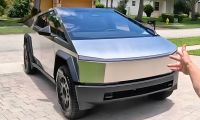
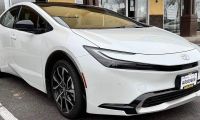
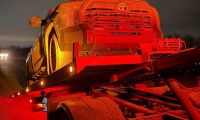
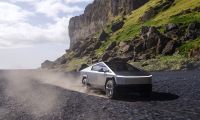
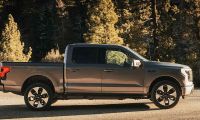
Comments
Outside of the hybrid debate,
Permalink
Outside of the hybrid debate, you and I agree that releasing these small battery BEVs is a weak move. While the public chargers have become more common, including fast chargers, most EV owners still charge at home, but having a bigger battery is a buffer so that your EV can work, worry-free) just like a gas powered car. The reason that EV range is less of a problem with most BEVs is that the new generation of BEVs have 200+ mile ranges, so running out of power is simply not an issue for most BEV owners anymore. But EV range issues are showing up again with a couple of these new models with smaller batteries. I thought that it was amusing that Mazda is trying to justify their choice of having a small battery, but anyone who knows about EVs knows that it is not a compromise that buyers have to make anymore. Mazda historically has never supported EVs, not even compliance models. Their path towards improved economy was choosing diesel engines, but VW's "DieselGate" mess tossed their future product plans into the trash, and they are trying to scramble to stay competitive. The problem, as you said was created because they had no EV plans, they have no affordable sources for batteries, and the competition for batteries is getting harder as the world is ramping up for more EVs. The trick is that with Mazda and the Mini, these are economy brands. Audi, BMW, and Mercedes can build in the added price for big batteries because they are luxury brands, but most likely Mini and Mazda will be trying to be competitively priced without low priced batteries, so they have chosen to use smaller batteries and try and market the decision as a smart move. The trouble with that approach is that when you look at the sales of BEVs last year for models with under 150 miles of range, and they were all VERY low ( some in the low hundreds) simply because for the same price you can buy a Bolt, or Tesla, or Leaf, or Hyundai that are under $40K but have over 200 miles. Competition will kill these half-hearted BEV attempts. The good news is that (like the early Leafs) the used market will benefit because the value of these used short range EVs will plummet, and you will be able to buy one for pocket change in a couple years.
Dean in sum and substance you
Permalink
In reply to Outside of the hybrid debate, by DeanMcManis (not verified)
Dean in sum and substance you’ve stated the reason I will not be surprised when Mazda either goes bankrupt, absorbed by a larger company, or gets out of the car business before it’s too late for them with electromobility. The Mazda MX-30 is the definite reason why the Tesla Model 3 is the best selling electric car in the USA of the next three models combined. MX-30. Mazda still doesn’t get it. You want a car company to make a cheaper electric car? Easy. The solution is quite simple: the car company has to switch supply chains and stop being cheap with the batteries. That’s all!
The problem any of you fail
Permalink
In reply to Outside of the hybrid debate, by DeanMcManis (not verified)
The problem any of you fail to mention is the environmental impact of making batteries.
Its not all about money. You guys have been listning to Donald Trump for too long
.
The day it will be possible to produce EV batteries without major CO2 impact, sure go ahead and make huge batteries. How have many billions of people own a car? Do you seriously think it would be sustainable for planet earth with most folks to drive around with a ton of batteries. Litterally.
Are you not forgetting something else as well? Charging infrastruktur. Charging infrastruktur is pivotal in making electric mobility work without oversized battery packs. In a European context you would expect country governments to take charge of charging infrastructure. No pun intended.
The fact of the matter is that the Mazda MX-30 offers the average Joe the possibility to go electric while spending roughly the cost of a similar gas car. Like CX-30.
With an EV he can fill up for a lot less at home.
Gas in Europe is expensive. Electricity is cheap.
Again in Europe you dont go to the other side of the continent every other day. You go to work, you go shopping, you go to the gym and the kindergarten. The idea that every single car should be designed to travel long distance is flawed. Again in Europe most familie have more than one car.
I think the MX-30 will perform everyday use with panache and top notch economy and impeccable green credentials.
Disclaimer: I have a crush on the MX-30
It all boils down to attitude and different cars for different folks.
I’m so sorry, excuse me, but
Permalink
I’m so sorry, excuse me, but I had to laugh when I read this. You see, one of the advantages of being an electromobility correspondent is you really have to read up on everything to see what the latest tech is doing and going. And if you knew anything about me, you’d know if you’re going to come up on me like this, whether here or on my social media, you better come correct and informed, otherwise I will destroy people like you right here. You can tell from comments like yours how well read and updated one is on the latest with electric cars. You are so not and so wrong. So I’ll put on my kid gloves to move you along and tell you to do your proper research. Once you do that you won’t need to look grossly behind the latest or just be ignorant, and I’ll be kind to leave this like this; the Mx30 or whatever it is, is not the kind of electric car that people even like you need, even if you knew what was good for you. Thank you and good bye.
Dear Mr. Al Castro,
Permalink
In reply to I’m so sorry, excuse me, but by Al Castro
Dear Mr. Al Castro,
You are dead right Mr Castro. I am not and never will be a elctromobility reporter. Lets agree thats a good thing:). It was never my intention to come up on you. Honestly I m not even sure what that means but you sound upset so it cant be good. Chill bro. I come in peace.
A good friend of mine goes everywhere with 2700 kilos of Audi etron. To buy milk, to work etc etc.
This is not rocket science. Its just way, seriously way too much weight. Its not sustainable and not green in any way, shape or form.
Any physicist will tell you exactly that.
Going back to your aggressive approach to communicating with readers, it does not make me laugh. It makes me slightly depressed and worried about the divisive times in which we live in. America was founded on freedom of speech. Not going after people who see things differently.
Mazda may be wrong or right. Who cares. But in a free world it is refreshing that different manufacturers do things differently.
Vive la difference!
The best of luck with your reporting!
Buenas noches,
Anders Persson